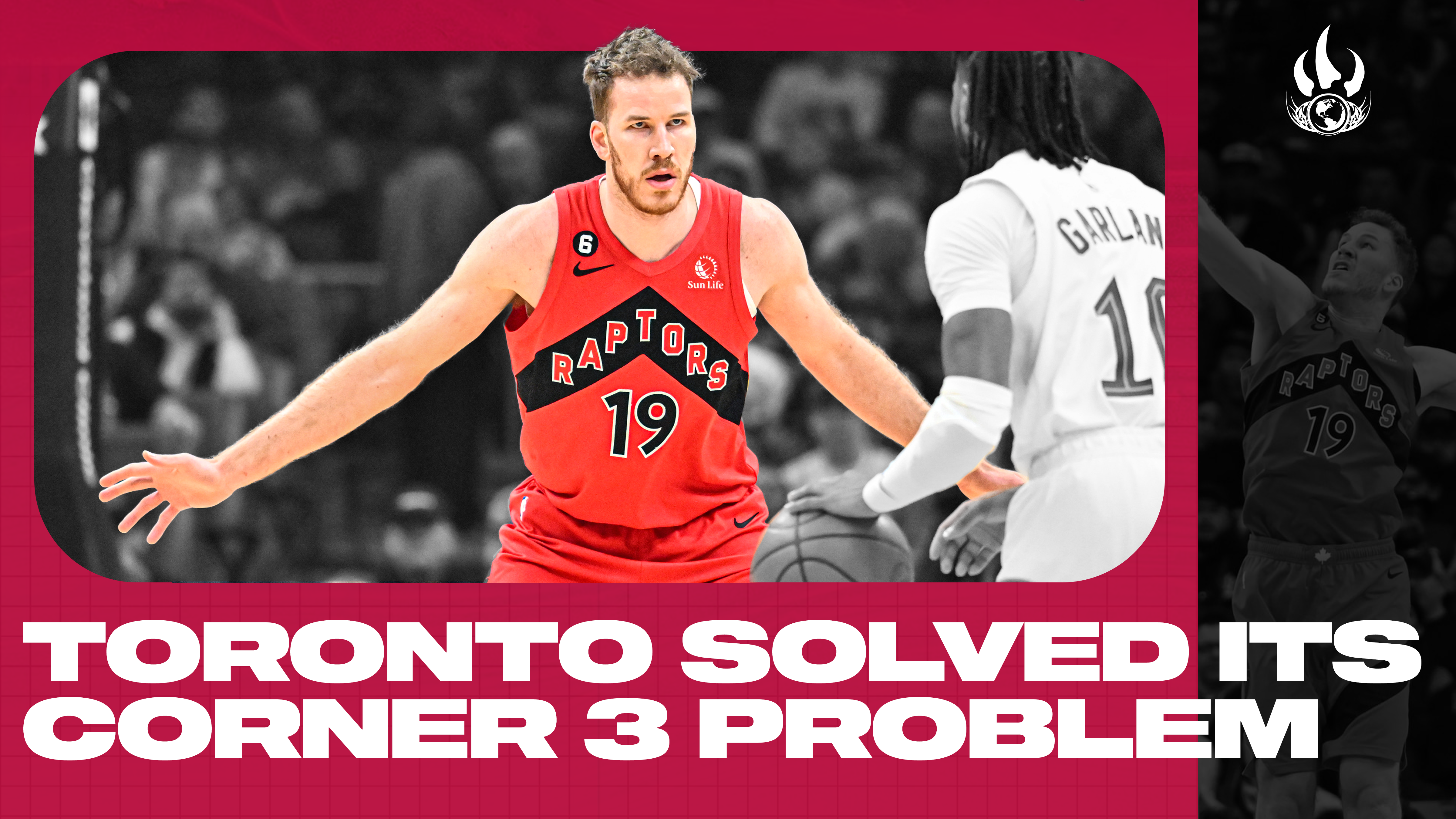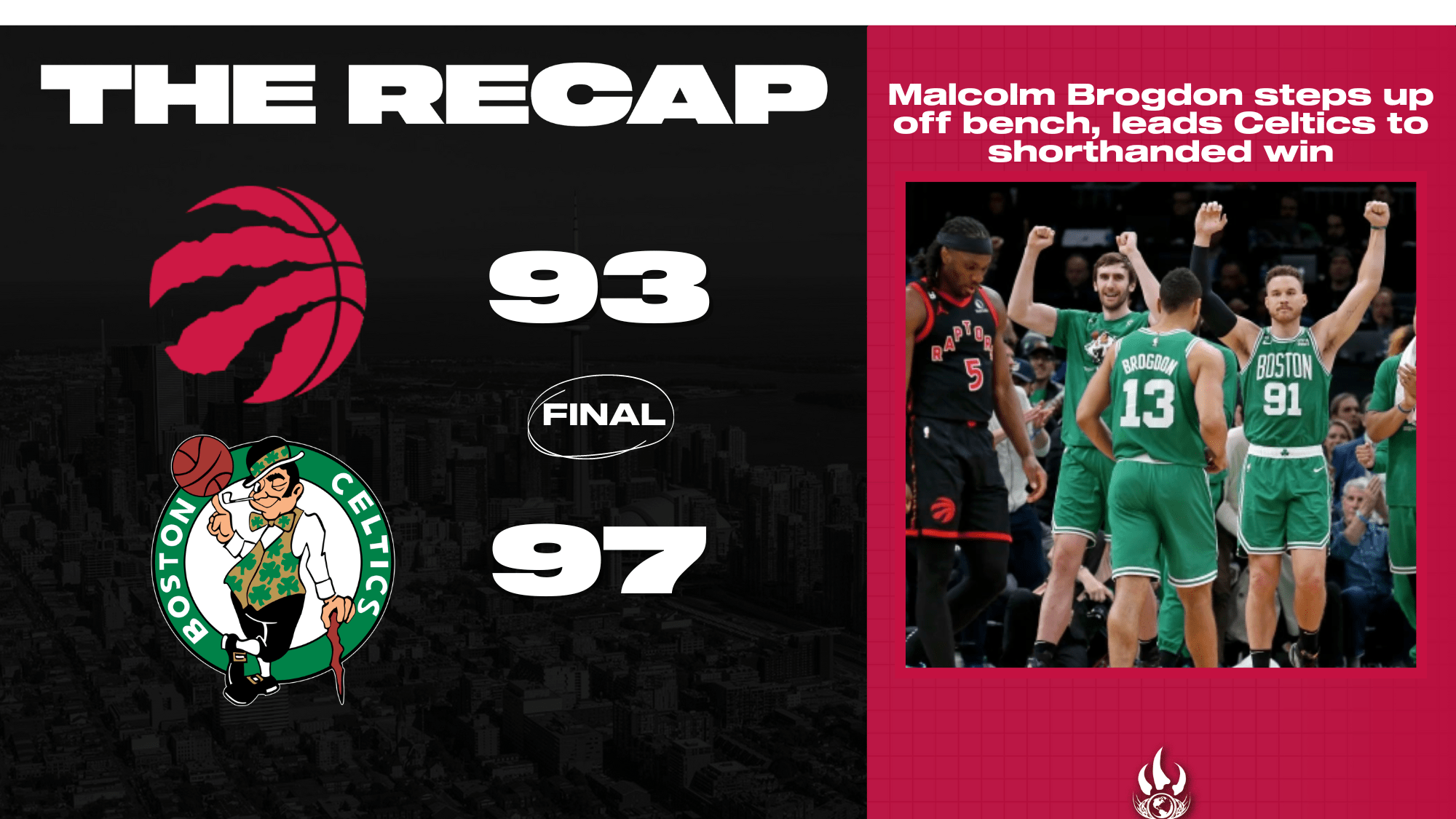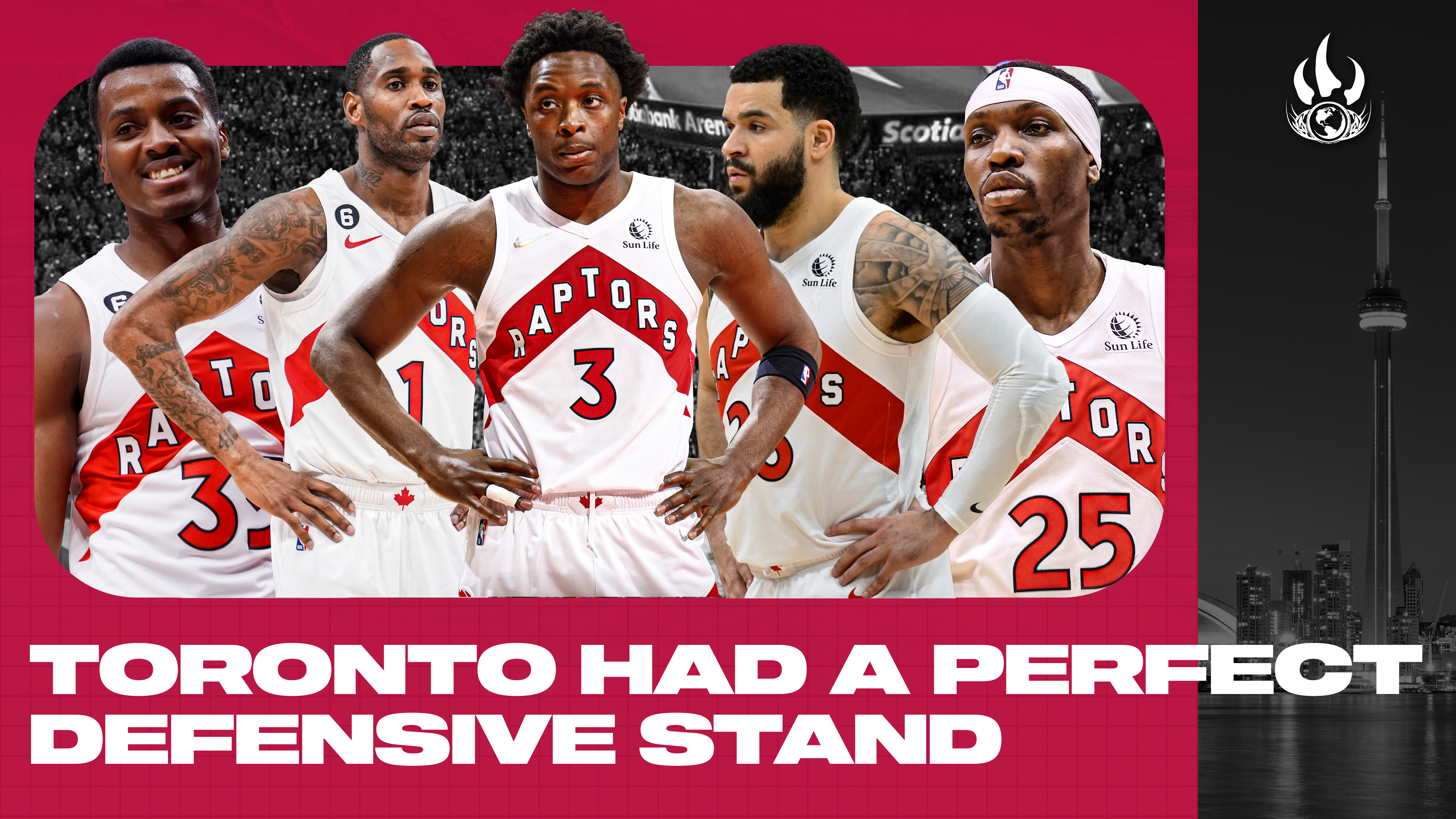It only took Jakob Poeltl one game to change the framework of the Toronto Raptors’ defense.
The definitive moment came midway through the third quarter against the Utah Jazz. Utah inbounded the ball and tried for a quick post-up, easily stonewalled by Poeltl. The Jazz ran a pick and roll, again defused by the presence of Poeltl in the lane. A quick skip to the weak-side corner, and Chris Boucher almost intercepts it with his extraordinary length. A drive — with Poeltl lurking in the lane — so the Jazz settle for a stepback triple. Boucher blocks it, and Poeltl grabs the loose ball to start a Toronto fast break.
For most of the 2022-23 season, the Raptors’ defense has been fiddling precariously close to the edge of the roof. The strategy of extreme gapping, cheating, digging, helping, and rotating is meant to concede lots of opposing corner triples in exchange for a boatload of forced turnovers. Last year, Toronto weaved a passable tune, ranking 10th overall in defense. That could be divided, though, with Toronto on one hand struggling to 18th in opposing effective field-goal percentage yet also forcing the highest rate of turnovers in the league. That’s a good trade when you rank 10th — the swing vote fell to collective rim defense, as the Raptors were middle of the pack in limiting opposing rim frequency as extremely long players like Chris Boucher, Precious Achiuwa, Pascal Siakam, O.G. Anunoby, and Scottie Barnes shared duties at the rim.
This season, Toronto snapped a string and fell off the roof. Before Feb. 9 — the trade deadline, when the Raptors acquired Poeltl from the San Antonio Spurs — Toronto was below average at forcing difficult shots from within six feet and at forcing opponents to miss those shots. Last year, Toronto was still poor at allowing high-quality looks at the rim, but it was the sixth-best at holding opponents to field-goal percentages below expected quality (based on tracking data and shot location).
Toronto still gave up corner triples, and it still forced plenty of turnovers, but the collapse at the rim resulted in a defensive debacle. It was a vicious cycle, with hectic effort from Toronto’s long defenders, and pell-mell rotating around the corner, resulting in layups regardless. Midway through the year, the coach and players were questioning the team’s heart and commitment as the defense failed entirely.
If that was rock bottom, Toronto took those stones and built a ladder, climbing out of that disaster pit. Since acquiring Poeltl, the Raptors are once again above average at forcing misses from within six feet. Poeltl has been fantastic protecting the rim — he’s one of nine players since the trade deadline to contest at least seven shots at the rim while holding those shots to an efficiency at least 7.0 percentage points below expected. (The others are the league’s absolute best rim protectors, including Rudy Gobert, Anthony Davis, Brook Lopez, Evan Mobley, and Myles Turner.) No Raptor reached those marks last year.
But a funny thing happened to Toronto’s defense with Poeltl in tow: Now, the Raptors are also limiting corner triples. Being able to protect the rim has meant Toronto can now use its collective length to limit corner triples, rather than collapsing to always put out fires in the paint.
Since the trade deadline, Toronto has given up far fewer corner triples while allowing opponents to shoot lesser percentages on those shots.
That gap translates to approximately five points a game. Of course, Opponents aren’t attempting 2.6 fewer field goal attempts per game with Poeltl in tow, so those corner triples they used to be attempting are just funneling elsewhere (really, the midrange). So the defense isn’t five points better — more like three, or something in that range. But it’s more than the numbers. The shell of the structure is remaining intact, which means all sorts of side benefits: Toronto is committing fewer fouls, has its stars playing fewer minutes (and running fewer miles in those minutes), and is contesting a higher proportion of opposing shots everywhere on the court. There’s a chicken-and-the-egg situation, with Toronto suffering fewer breakdowns because it’s giving up lesser looks which means there are fewer breakdowns, and so on and so forth, all the way to the bank.
Overall, Toronto was the 17th-ranked defense before the trade deadline, with the 29th-ranked opposing effective field-goal percentage. They’re the tied-fourth-ranked defense since, with the 24th-ranked opposing effective field-goal percentage. Baby steps on the efficiency component, of course, but Toronto’s defense is improving to — and even past — the level it was last season.
Poeltl allows that. Since becoming a Raptor, he has led the team in rebounding and blocks and finished fifth in steals. That last component is crucial; Toronto has not sacrificed its ability to collect steals in fixing its ability to force misses.
Poeltl plays at the level of the screen almost twice as often as he plays in deep drop. He’s more effective at forcing misses in drop, but when he plays at the level, it gives Toronto an extra moment of trying to force a turnover with two on the ball, and then Poeltl can either switch or recover or peel switch away, giving the team long moments of all of its longest defenders recovering through space to take away lanes. That’s a lot of extra opportunity to force turnovers. It does open up more cracks for efficient shots, but that’s a trade Toronto is willing to live with.
Giving opponents cracks in the defense, from time to time, has always been a liveable strategy for this era of Toronto. Since Nurse became head coach of the Raptors in 2018-19, the Raptors have forced 6225 turnovers, the most over that time period. It’s the most by such a wide margin that the gap between Toronto in first and the Minnesota Timberwolves in second is larger than the gap between Minnesota and the Golden State Warriors, in 11th.
Nurse likes to switch defensive coverages more than any other coach in the game, and some of those packages are extremely aggressive, meaning offenses have opportunities to find easy shots. Toronto has always bet the diversity of its coverages and athleticism of its defenders would combine to mean it would win those bets more often than not. That hasn’t been the case this season. But just because Poeltl is in town doesn’t mean the Raptors are going to stop laying bets on the defensive end. He just gives them better odds — he doesn’t take away the gambling addiction.
This style of defense won the Raptors a championship — the 2018-19 team forced the ninth-most turnovers in the league and conceded the seventh-most corner triples. Toronto has radicalized since then, leading the league in forced turnovers and corner 3s allowed, until the Poeltl trade. In a sense, the team with Poeltl has somehow found a way to obtain the benefit (turnovers) without conceding as many losses (corner 3s). This is the least extreme version of Toronto’s approach. (More on the nuances of how that’s possible later today.)
Still, Toronto’s championship hopes rest on talent and talent alone. Structure and tactics can only take a team so far. They were vital to the 2019-20 and 2021-22 versions of the Raptors overachieving, and they’ve been a boon with Poeltl in tow, too. But Nurse and company can’t lifehack their way to a championship.
They can cheat their way back to the 50-win club though, which is the pace Toronto has been on with Poeltl on the roster. And from there, a championship is, realistically, only a home-run trade away — then Toronto would be fiddling its tune from the mountain top rather than over the far-flung village of the play-in tournament. The most optimistic reading of Toronto’s strategies is that the team is back on track in regards to its long-term planning. More has to happen to get them to the promised land, but the defensive approach once again looks helpful rather than harmful. Now there’s less to fix, at the very least, for Toronto to climb back to the championship circle.



